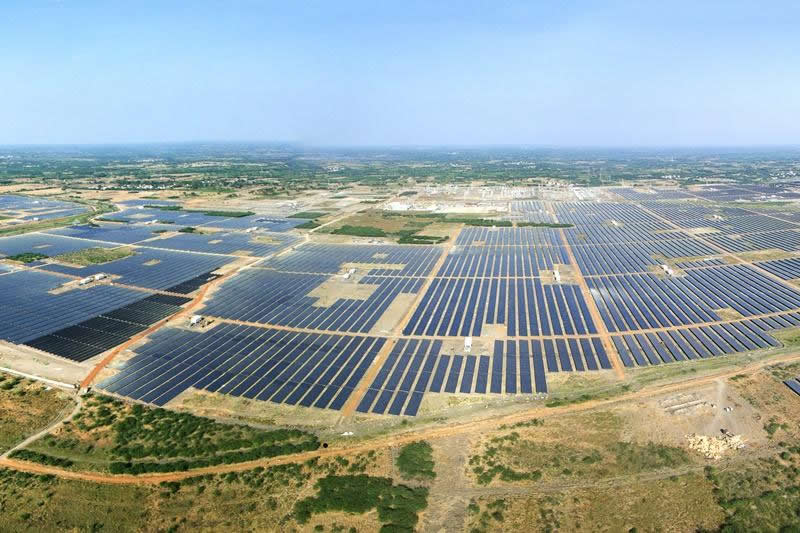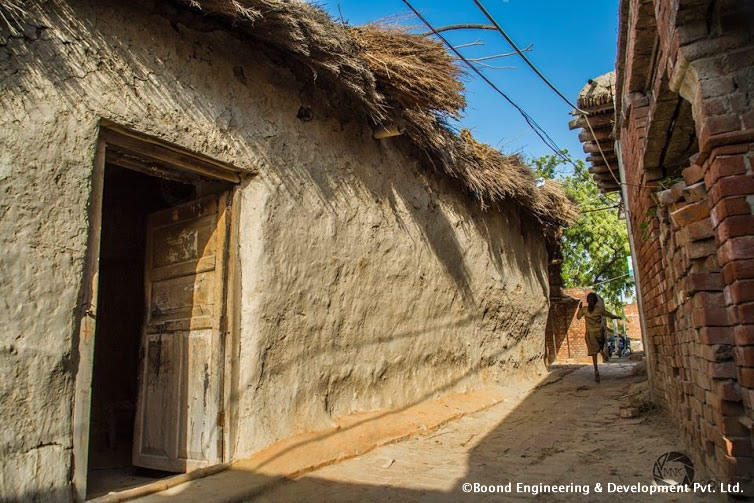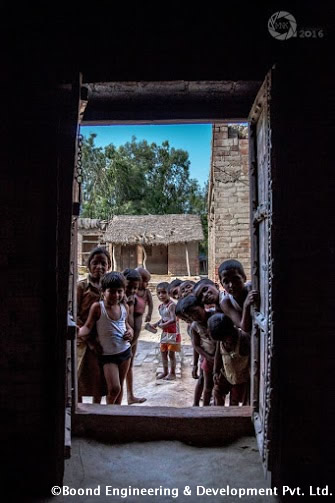India’s microgrid market is rapidly emerging, driven by multiple factors, including chronically unreliable main utility grids and ambitious government programs to adopt renewable energy and improve energy access – particularly for rural Indians. According to Climatescope, a country-by-country assessment of readiness for renewable energy investment, India ranks second in the list of over 100 countries. India is already on track to become the world’s third largest solar power after China and the United States. Bloomberg New Energy Finance has estimated that rooftop solar alone represents a $23 billion investment opportunity in India. India has the world’s largest auction for renewable energy, and has recently embarked on major incentives for renewable energy development, including microgrids.
India added more capacity from renewable energy last year than it did from traditional resources like coal and hydro. In the first half of 2018 it added almost six gigawatts of solar, and 2019 is expected to be another record-breaking year for renewables. India is also developing major biomass and waste-to-energy (biomass) programs. Finally, there are ongoing efforts to improve energy access by extending the national grid to remote rural areas.
Despite all these important programs, many experts have concluded that microgrid technology is the most promising way for India to meet its aggressive goals of clean energy access for the entire population.

India Provides Leadership in Solar for Developing Countries
As of mid-2018, India scaled up its renewable energy goals from 175 GW to 227 GW over the next four years, with about 40 GW of that goal representing rooftop solar. While the price of rooftop solar has dropped by more than half in the last five years, the cost of retail electric power has risen by more than 20 percent, leading to strong growth in the rooftop PV market. However, homeowners still lack financing options and struggle to manage the upfront investment.
India is a driving force for renewable energy among developing countries, having created the International Solar Alliance, and it serves as the international headquarters for this treaty-based intergovernmental organization that now includes over 120 nations. Membership in the ISA is limited to the “sunshine” countries clustered around the equator (technically the ones between the Tropic of Cancer and the Tropic of Capricorn), which collaborate to advance renewables through solar-friendly policies.
Key Energy Access Programs in India
India has major programs in place to reduce energy poverty, particularly in rural areas. About 300 million people still lack any access to electricity, and tens of millions more connected users do not have a reliable supply.

One of the most important energy access programs in India is “24×7 Power to All,” an intensive effort to improve energy access to individual households through home solar kits. The $4.4 billion SAUBHAGYA (Pradhan Mantri Sahaj Bijli Har Ghar Yojana), or solar lighting, program, launched in 2017, is delivering low-cost or free home solar kits to many rural households. The home electrification packages consist of solar power packs of 200-300 watts with batteries, and are designed primarily for remote, off-grid customers. They provide enough electricity for basic amenities including five LED lights, one DC fan and one DC power plug. The program also offers to cover the cost of repair and maintenance for five years.
As of late 2018, fifteen Indian states had achieved 100 percent electrification, doubling the number from the previous year, with most of the newly electrified regions giving credit to the SAUBHAGYA program for their energy access improvements. In order to speed up adherence to the program, the Indian government is offering cash rewards to utility employees and local officials in regions that can claim full energy access.
India also has a village electrification program called DDUGJY (Deen Dayal Upadhyaya Gram Jyoti Yojana), which was launched in 2014 to drive improvements to the electric grid in rural areas. So far, slightly over 12,000 villages have been electrified, but there are 6,000 remaining before the final goal is reached. The DDUGJY program defines “electrification” as energy access for only 10 percent of the houses in each village. However, the government is now moving away from that definition and shifting its goal to to provide electricity for each individual household.
Many families served by solar home systems are now moving on to larger devices, according to Bloomberg New Energy Finance, encouraging suppliers who wish to up-sell them on other solar products.

In India, a Connection Doesn’t Mean Access to Electricity
Many Indian homes and villages have access to the grid, but they don’t actually have electricity. In some cases, families can’t afford to pay for power, and in others, electricity via the main grid is limited to a few hours a day. Meanwhile, energy theft is rampant, contributing to the chronic financial instability of India’s utilities, and their inability to invest in infrastructure upgrades. According to official estimates, theft has accounted for as much as 50 percent of the power losses in past years in the capital of New Delhi.
As a result, minigrids or microgrids can be the best solution, both for remote areas with no grid access and for locations where there is an option to connect to an underperforming national system. Although not theft-proof, it’s easier to detect where energy is being stolen in a microgrid, particularly if smart meters are in use.
Why Microgrids Can Provide the Solution to Multiple Energy Challenges
In 2016, India’s ministry of New and Renewable Energy (MNRE) launched a plan to install 10,00 microgrids and minigrids, aiming at a cumulative capacity of 500MW by 2021. The ministry defines microgrids as renewable-based distributed generation under 10 kW, which can operate on a stand-alone basis or connected to the central grid; minigrids have the same functionality but are larger, over 10 kW. A special category of energy service providers called Rural Energy Service Providers (RESPs) are receiving special incentives from the government to promote this program including capital and streamlined approvals.

Microgrids and minigrids can be an important and more cost-effective alternative to the extension of the main electric grid. Hybrid renewable microgrids can often provide energy access more cheaply than transmission, due to the falling prices of solar, batteries and digital controls. The modular nature of microgrids allows them to be scaled up by their community owners when necessary. They can also produce more reliable power, at a higher quality. That’s because grid expansion can create power losses where transmission and distribution distances are increased.
Microgrids can conform easily to new Indian regulations mandating increasing amounts of renewables in the country’s energy system, they can deliver reliable power more rapidly than the government’s central grid extension program, and if equipped with smart meters, can provide better monitoring of energy theft. However, microgrids require build-out of the same local distribution systems that would be required to deliver regular utility services to unelectrified rural areas, so the cost for small household users is still relatively high.
Some Indians view microgrids as nothing more than a stopgap solution to the grid reliability problem. When seen in that way, microgrids trouble current investors, who believe that if India succeeds in reaching its goals of building out the country’s central grid, that could create stranded assets out of microgrids. However, if grid-connected microgrids are seen as permanent and complementary additions to the central grid – as is beginning to be the case in many developed countries – there is no stranded asset risk.
In the future, microgrids can provide important services to the main grid. While users connected to a microgrid can be insulated from power outages on the conventional network, minigrids or microgrids connected to the main grid also have the potential to support it by exporting their surplus power when needed. It remains to be seen whether India’s energy infrastructure will evolve along the same path as developed countries, which are increasing their investments in distributed energy.
Importantly, India’s commercial and industrial users (C&I) are building micogrids at an even faster pace than rural communities in order to ensure reliable power supplies in the face of an undependable central electric grid. Many industrial processes are dependent on a certain level of power quality in order to function properly.
Notable microgrid projects in India include:
- Chhattisgarh Renewable Energy Development Agency (CREDA) has installed and operated more than 500 solar microgrids (some may be “minigrids” according to the MNRE definition) – more than any other Indian state. Users pay relatively low fixed fees in addition to negligible energy costs. However many of the microgrids only serve lighting loads, and do not power commercial activities that would support economic development.
- Husk Power has built over 75 microgrids in India and Africa connecting 15,000 homes and businesses; the company plans an additional 300 microgrids over the next several years. Husk Power focuses on using agricultural waste, converting rice husks to biogas to provide baseload generation.
Energy Access Alone Isn’t Enough
Although research has shown that access to electricity can have positive impacts upon rural economic development, solar home lighting kits alone are not enough to bridge the poverty gap. The Indian government sees microgrid installations as a way to accelerate economic activity and strongly encourages microgrid and minigrid developers and local officials to consider using electricity to offer not only power, but also Internet access, medical and educational services, potable water, skills and training.
Ministries and departments can accelerate economic activity linked to microgrids by establishing clear poverty reduction goals that create rural economic development through better access to healthcare, education and jobs.
India Makes Up HOMER Energy’s Second Largest User Group Worldwide
Indian users are eagerly downloading HOMER software and modeling energy projects. We see a strong interest in microgrid modeling and system design, especially from Indian students, academic, and research institutions. HOMER Pro has been the most popular product among Indian users so far, and given the government’s microgrid initiative, we anticipate that C&I businesses as well as developers of residential microgrids will be eager to find out how the software can help reduce their design and planning costs. If you’re reading this newsletter and you’re not signed up to receive it on a regular basis you can sign up here.
 Download HOMER Grid and try the full-featured version for three weeks. Design a grid-tied distributed energy system that allows you to model an islanded state during random outages; enter custom utility tariffs and calculate the economics. HOMER Grid helps you compare the long-term costs of solar-plus-storage with CHP, wind or other resources, versus the cost of your utility power.
Download HOMER Grid and try the full-featured version for three weeks. Design a grid-tied distributed energy system that allows you to model an islanded state during random outages; enter custom utility tariffs and calculate the economics. HOMER Grid helps you compare the long-term costs of solar-plus-storage with CHP, wind or other resources, versus the cost of your utility power.

Thanks for writing this article. There is lot of potential for solar PV based microgrid in India for different sectors of consumers.
Very informative and cioncise
Dear Dr. Konika Das,
Thank you very much for your comment.
All the best,
Lili Francklyn